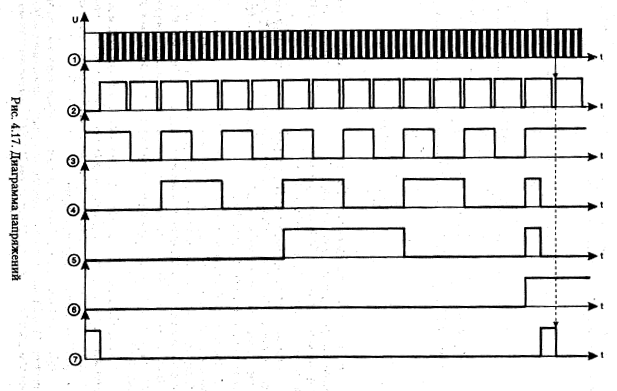
|
|
ENCYCLOPEDIA OF RADIO ELECTRONICS AND ELECTRICAL ENGINEERING Lighting control from any remote control. Encyclopedia of radio electronics and electrical engineering
Encyclopedia of radio electronics and electrical engineering / Lighting Imported devices of a similar purpose have already appeared on sale, but at a rather high price. Such a device, if desired, is easy to do on your own, and without large material costs. A familiar part of a modern TV or music center is an IR remote control (RC). With this remote control, you can also control lighting using a small console. In this case, one of the buttons (rarely used) is pressed. The proposed device allows you to turn on and off the load, such as lighting, from any remote control at a distance of up to 5 m. Usually, to control the operation of the TV, you have to hold down the remote control button for no more than 1 s. The proposed device performs load switching if the button on the remote control is pressed for more than 2 s. This command selection algorithm for switching control can significantly simplify the electrical circuit. The device consists of an IR pulse receiver, fig. 4.14, and the control unit, fig. 4.15. As a receiver, you can take any of the typical circuits used in TVs for remote control. The control unit is assembled on three CMOS chips and consists of a wide pulse shaper (D1.1), a two-second time interval selector (D1.2) and binary counters on trigger elements D2...D3. Buttons SB1 and SB2 allow you to turn on and off the load without a remote control.
The indicator of the last trigger (D3.2) is the glow of the HL1 LED. The VS1 optocoupler provides electrical isolation of the control unit from the 220 V network, which makes it possible to obtain a good resistance of the circuit to interference. Instead of an optocoupler, the final lamp control stage can be performed on a conventional triac according to the circuit shown in Fig. 4.16.
Figure 4.17 shows voltage diagrams at control points, explaining the operation of the control unit. At the initial moment of power supply to the circuit, a circuit of elements C4-R5 ensures that the trigger in D3.2 is set to its initial state (log. "0" at output 1).
When the button on the remote control is pressed, from the incoming bursts of pulses to the inputs of the elements D1.1 and D1.2, wider ones are formed. Trigger D1.2 after 2 s ensures the installation of counters D2, D3, T in the initial state (generates a reset pulse at the output D1/12). The scheme of the device is not critical to the choice of parts and their ratings may differ from those indicated by 30%. All fixed resistors are of the MLT type, trimmer R1 is of the SP4-1 type. Non-polar capacitors of the K10-17 type, electrolytic C3 and C5 (for the receiver C1, C2 and C5, C6) of the K53-16 type. Diodes KD522 can be replaced by any pulse. The voltage regulator D4 (import analogue 78L12) is being replaced by a more common one from the KR142EN8B series. Transformer T1 type TP112-8-1, but any of those used in domestic TVs for power in standby mode or in DANDY-type game consoles will also work; The required voltage of the secondary winding is 15 ... 20 V, and the current is at least 10 mA. When a triac is connected instead of an optocoupler switch, the T2 pulse transformer is made on a ferrite ring of size K16x10x4 mm, brand M4000NM1 or M2000NM, with a PELSHO wire with a diameter of 0,18 mm and contains 1 - 80 turns in the winding, 2 - 60 turns. Before winding, the sharp edges of the core must be rounded off with a needle file, otherwise they will cut through the wire and there will be a short circuit between the windings. Structurally, the entire device is assembled in a case with dimensions of 110x88x44 mm. IR pulse receiver circuit board, fig. 4.18 is placed in a copper foil screen, which is necessary to eliminate the influence of interference. A universal prototyping board was used to mount the control unit circuit, and the connections were made by wires.
The prefix has been tested in operation with remote controls from imported TVs from different companies - AKAI, SAMSUNG, PANASONIC. But since each remote control has its own relationship between the duration of the code message and the interval, for a clear switching operation, it may be necessary to adjust the circuit with resistor R1 (or select the value of capacitor C1).
Machine for thinning flowers in gardens
02.05.2024 Advanced Infrared Microscope
02.05.2024 Air trap for insects
01.05.2024
▪ Display for creating 3D holograms in the air ▪ Invented fabric that mosquitoes won't bite through ▪ 5-inch 1920 x 1080 pixel display from LG
▪ section of the site Labor protection. Selection of articles ▪ article by Henri-Frédéric Amiel. Famous aphorisms ▪ article In what language is the eagle and the liver denoted by one word and why? Detailed answer ▪ article TV designer. Job description ▪ article Typographic inks. Simple recipes and tips
Home page | Library | Articles | Website map | Site Reviews www.diagram.com.ua |






 Arabic
Arabic Bengali
Bengali Chinese
Chinese English
English French
French German
German Hebrew
Hebrew Hindi
Hindi Italian
Italian Japanese
Japanese Korean
Korean Malay
Malay Polish
Polish Portuguese
Portuguese Spanish
Spanish Turkish
Turkish Ukrainian
Ukrainian Vietnamese
Vietnamese





 Leave your comment on this article:
Leave your comment on this article: